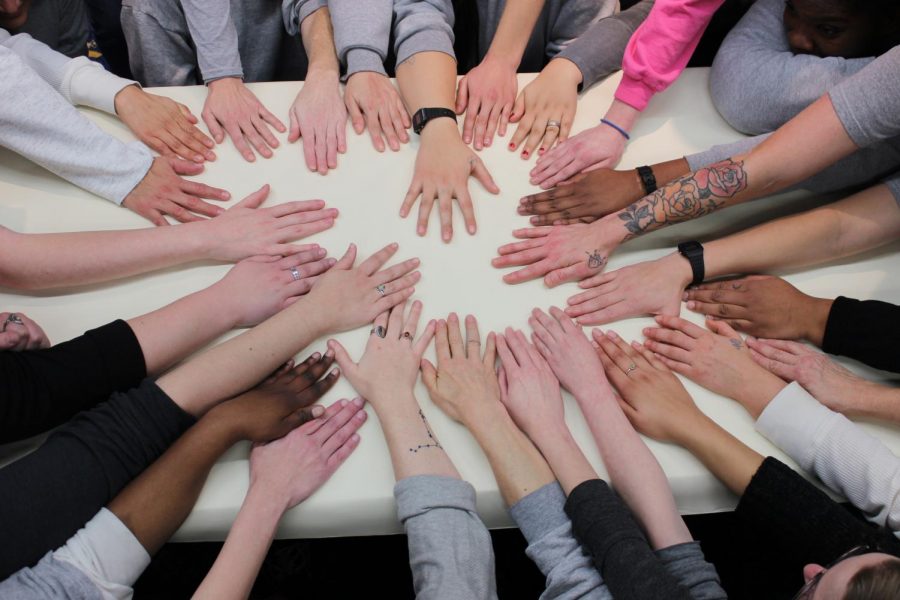Unpacking prison stigma through storytelling
Professors Bell and Schaefer were awarded a $5,000 contract from the Minnesota Department of Corrections in an endorsement for Hamline’s Inside-Out program.
The hands of Hamline students and incarcerated women in Inside-Out course of 2017
October 30, 2018
Colleen Bell, Professor of Conflict Studies and Women’s Studies, is currently teaching a class of 13 Hamline students and 13 incarcerated women at the Shakopee Correctional Facility through a program called Inside-Out – the ‘inside’ students being the incarcerated, and the ‘outside’ students attending Hamline. Bell’s class is based on the power of narrative and storytelling.
“If we want storytelling to serve social justice purposes,” Bell said, “we have to be really critical about whose stories don’t get heard.”
Bell said her goals for her class include breaking the stigma of being locked up, to examine the stories that are told about women in prison and empower everyone in the class to author their own stories and shape their own narratives.
The contract between Hamline and the Minnesota Department of Corrections awarded for this fall semester is being used to provide transportation to Shakopee, pay for class materials, a teaching assistant and to allow the incarcerated students to gain college credit.
Though Inside-Out programs have been facilitated through Hamline at both men’s and women’s prisons, Bell is interested specifically in women’s experiences as they experience incarceration.
“[Women’s facilities] are quite different than men’s facilities,” Bell said, “about 80-85 percent have experienced trauma and abuse.”
Conner Suddick, a senior legal studies and social justice major currently taking Bell’s class, said the Inside-Out program has exceeded his expectations.
“The class dynamic and the rapport built between inside and outside students allows us to share an open and honest space about our experiences,” Suddick said.
He spoke about the power of dialogue between the populations.
“This course inspires us to learn about the power and purpose of stories,” Suddick said.
Shelly Schaefer, professor of Criminology, was the first to introduce the program to Hamline in 2015. She left for Oregon, after securing funding and support from the Hamline community, to train as an Inside-Out facilitator.
“I trained in the maximum-security prison,” Schaefer said, “and the former inside students were the ones who did the training for the new facilitators.”
Currently, Hamline has three faculty members who are trained as facilitators – Bell, Schaefer and Gina Erickson, Professor of Criminology. The content of Inside-Out courses changes semester to semester, based on the facilitator who is teaching, but the rigid guidelines of the class stays the same.
“There are certain very specific things that you follow in the model to create equity in the classroom, and to allow for conversations between individuals that sometimes don’t have conversations together,” Schaefer said.
There are strict rules restricting contact between inside and outside students after the class. Schaefer said this usually brings both groups of students to tears.
“When you’ve become that honest with yourself, and you’ve had some of those conversations, it’s just a very profound experience for students,” Schaefer said, “I cry too.”
Joseph Oliver, a Hamline alumnus and current officer with the Airport Police Department, took Schaefer’s first class and returned to be a teaching assistant in her next class.
“This class really showed me what it meant to put myself in other people’s shoes,” Oliver said, “to let go of judgments, and just treat people like people.”

